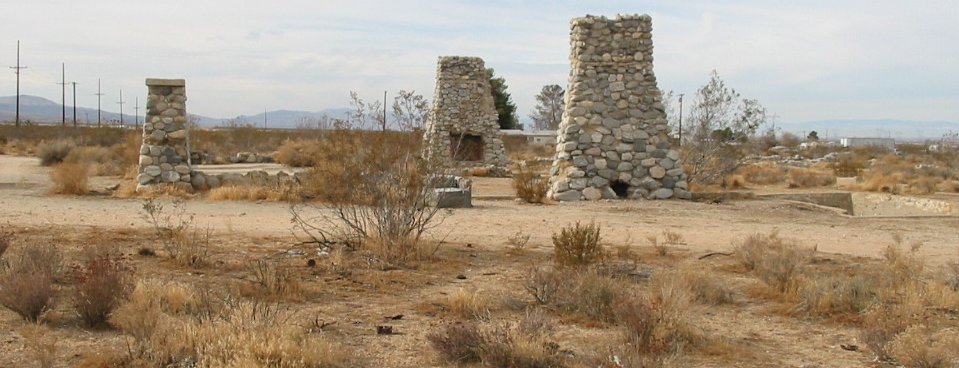Part 1: The Rise of Llano
Llano Del Rio (officially organized as The Llano Del Rio Company of Nevada) was a commune (or "colony") located in what is now Llano, California east of Palmdale in the Antelope Valley, Los Angeles County. The charter was issued October 15, 1915 by progressive/socialist political candidate Job Harriman, after he had failed his bid to become the mayor of Los Angeles. The Llano Del Rio Colony settled in the southern edge of the Mojave Desert along Highway 138 near what is now 165th Street East, in the alluvial plain that spread out to the north from the San Gabriel Mountains. The colony took advantage of water from Big Rock Creek, an intermittent stream that flowed from the San Gabriel Mountains. Several structures were constructed using local granite boulders and lumber, including a hotel, meeting house, and water storage tank. There was also a small open aqueduct made of granite cobbles and cement. The remnants of the built features are still visible at the site, which has been abandoned for decades.
During 1918, the colony was abandoned. Llano Del Rio turned out to be too far from other settlements to develop a sustaining economy, and the water supply from Big Rock Creek proved to be unreliable. Some of the settlers (60 families) relocated to form New Llano, Louisiana.
History
Llano Del Rio, which was organized under the Llano Del Rio Company was a corporate-run socialist Utopian society initiated by Job Harriman after he failed as a politician. He believed that the success of socialism depended not only on politics, but also on the realization of socialist principles. Harriman did not attempt to reform all of society, but rather, he believed that by creating a functioning socialist community within the larger society of capitalism, the larger society would gradually convert to socialism. Although Llano filed for bankruptcy during 1918, from the time of its official formation in 1914 until 1917 the colony experienced extreme economic and political growth. By 1917, the population was over nine hundred members. In just over three years, the colonists of Llano were able to form a school system, create high producing farms, start numerous clubs and sports teams, and build many industries.
Founder
Job Harriman a lawyer and politician initiated Llano del Rio. He was the Socialist Labor Party candidate for governor of the state of California. However, after having little success as a Labor Party candidate, Harriman began to align himself with the more mainstream labor movement. During 1900, he became the vice-presidential candidate to Eugene Debs. While campaigning with Debs, Harriman, though still loyal to socialist principles, began to believe that for the Socialist Party to gain success it needed to replace its political base with an economic one. Socialism would eventually transform capitalism from within. Harriman also believed that for socialism to be successful it needed to be implemented economically as well as politically: “‘It became apparent to me that a people would never abandon their means of livelihood, good or bad, capitalistic or otherwise, until other methods were developed which would promise advantages at least as good as those by which they were living.’”
Design
Llano del Rio was planned by Alice Constance Austin and is her most recognized project. She was hired by Job Harriman, with the intention to build a cooperative community. She designed a circular city plan which included administrative buildings, restaurants, churches, schools, markets, etc. The houses had a "feminist" design and included plans for a kitchenless house, communal daycare areas, built-in furniture and heated tile floors; all of which would serve in reducing the amount of domestic work done by women.
Admission requirements
Applicants for membership were required to be idealistic, industrious, and sober. To ensure standards were met, applicants needed three references, written ideally by a local union president or secretary. Questions testing an applicant’s dedication to socialism, such as, “Will solving the economic problem ultimately lead to solving the social problem?”, were also part of the entrance procedure. Additionally, only Caucasians were admitted. An article in The Western Comrade attempted to explain this admittance discrimination, “The rejection of these applications are [sic] not due to race prejudice but because it is not deemed expedient to mix the races in these communities”. In general, the California Socialist Party of that time was racially exclusive.
Continued in Part 2: The Fall of Llano
Information courtesy of Wikipedia. Photo is the property of "Binksternet" and is used via Creative Commons Attribution-Share Alike 3.0 Unported license.


No comments:
Post a Comment